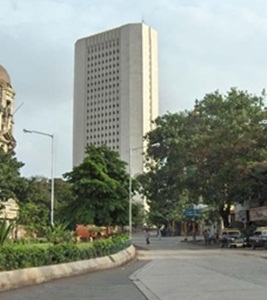The Monetary Policy Committee of the Reserve Bank of India has opted to keep policy interest rates unchanged against the backdrop of slowing inflation and the Indian rupee hitting record lows against a firming dollar and rising global oil prices.

The MPC at its meeting today decided to keep the policy repo rate under the liquidity adjustment facility (LAF) unchanged at 6.5 per cent. Consequently, the reverse repo rate under the LAF remains at 6.25 per cent, and the marginal standing facility (MSF) rate and the Bank Rate at 6.75 per cent.
MPC said the decision has been taken on the basis of an assessment of the current and evolving macroeconomic situation, and is consistent with the stance of calibrated tightening of monetary policy in consonance with the objective of achieving the medium-term target for consumer price index inflation of 4 per cent within a band of +/- 2 per cent, while supporting growth.
Zooming oil prices and high US interest rate and a widening current account deficit have combined to push the Indian rupee down to record lows.
While these are mostly external factors, the MPC, in keeping with its inflation targeting mandate, decided to go by the inflation curve.
At the time of the August meeting, the MPC had projected inflation at 4.8 per cent in the second half of the current fiscal. However, the last two readings on inflation have been lower than expected, although most MPC members see the need to anchor inflation close to 4 per cent.
The MPC has already raised the benchmark repo rate twice this year, taking it from 6 per cent to 6.5 per cent. In light of the prevailing uncertainties, the committee maintained a neutral stance till August.
RBI noted that growth in global trade is weakening as reflected in export orders and automobile production and sales. Crude oil prices eased during the first half of August on concerns of reduced demand from emerging market economies due mainly to the spillover from country-specific turmoil, and accentuated by rising supplies. However, prices rebounded on expectation of reduced supplies due to sanctions on Iran and falling US stockpiles.
Base metal prices witnessed selling pressure in anticipation of weak demand from major economies. Gold prices continued to slide lower on a strong US dollar, though they recovered somewhat on safehaven demand from the mid-August lows.
Global financial markets continued to be affected by monetary policy stances in major advanced economies, the spreading of contagion risks from specific EMEs, and geopolitical developments.
On the domestic front, real gross domestic product (GDP) growth surged to a nine quarter high of 8.2 per cent in Q1 of 2018-19, extending the sequential acceleration to four successive quarters. Of the constituents, gross fixed capital formation (GFCF) expanded by double digits for the second consecutive quarter, driven by the government’s focus on the road sector and affordable housing. Growth in private final consumption expenditure (PFCE) accelerated to 8.6 per cent, reflecting rising rural and urban spending, supported by retail credit growth. However, government final consumption expenditure (GFCE) decelerated, largely due to a high base.
The growth of exports of goods and services jumped to 12.7 per cent, powered by non-oil exports on the back of strong global demand. In spite of import growth continuing to surge, high exports growth helped reduce the drag from net exports on aggregate demand.
On the supply side, growth of gross value added (GVA) at basic prices accelerated in Q1, underpinned by double-digit expansion in manufacturing activity which was robust and generalised across firm sizes. Agricultural growth also picked up, supported by robust growth in production of rice, pulses and coarse cereals alongside a sustained expansion in livestock products, forestry and fisheries.
In contrast, services sector growth moderated somewhat, largely on account of a high base. Construction activity, however, maintained strong pace for the second consecutive quarter.
The fourth advance estimates of agricultural production for 2017-18 released in August placed foodgrains production at a high of 284.8 million tonnes, 1.9 per cent higher than the third advance estimates (released in May 2018) and 3.5 per cent higher than the final estimates for the previous year.
Industrial growth, measured by the index of industrial production (IIP), accelerated in June-July 2018 on a year-on-year basis, underpinned mainly by high growth in consumer durables, notably two-wheelers, readymade garments, stainless steel utensils, auto components and spares, and accessories. Growth in consumer non-durables also accelerated in July. The infrastructure and construction sector continued to show solid growth. Primary goods growth accelerated, driven by mining, electricity and petroleum refinery products. Growth in capital goods production spiked in June, but decelerated sharply in July.
The output of eight core industries growth remained strong in July, driven by coal, petroleum refinery products, steel and cement, but moderated in August.
Growth in wages in the rural and organised manufacturing sectors remained contained. Systemic liquidity alternated between surplus and deficit during August-September 2018, reflecting the combined impact of expansion of currency in circulation, Reserve Bank’s forex operations and movements in government cash balances.
From a daily net average surplus of Rs20,100 crore during August 1-19, 2018, liquidity moved into deficit during August. After turning into surplus during August 31-September 10 due to increased government spending, the system again moved into deficit during September 11-29 on the back of an increase in government cash balances and Reserve Bank’s forex interventions.
It is these that prompted the central bank to conduct two open market purchase operations in the second half of September to inject Rs20,000 crore of durable liquidity.























